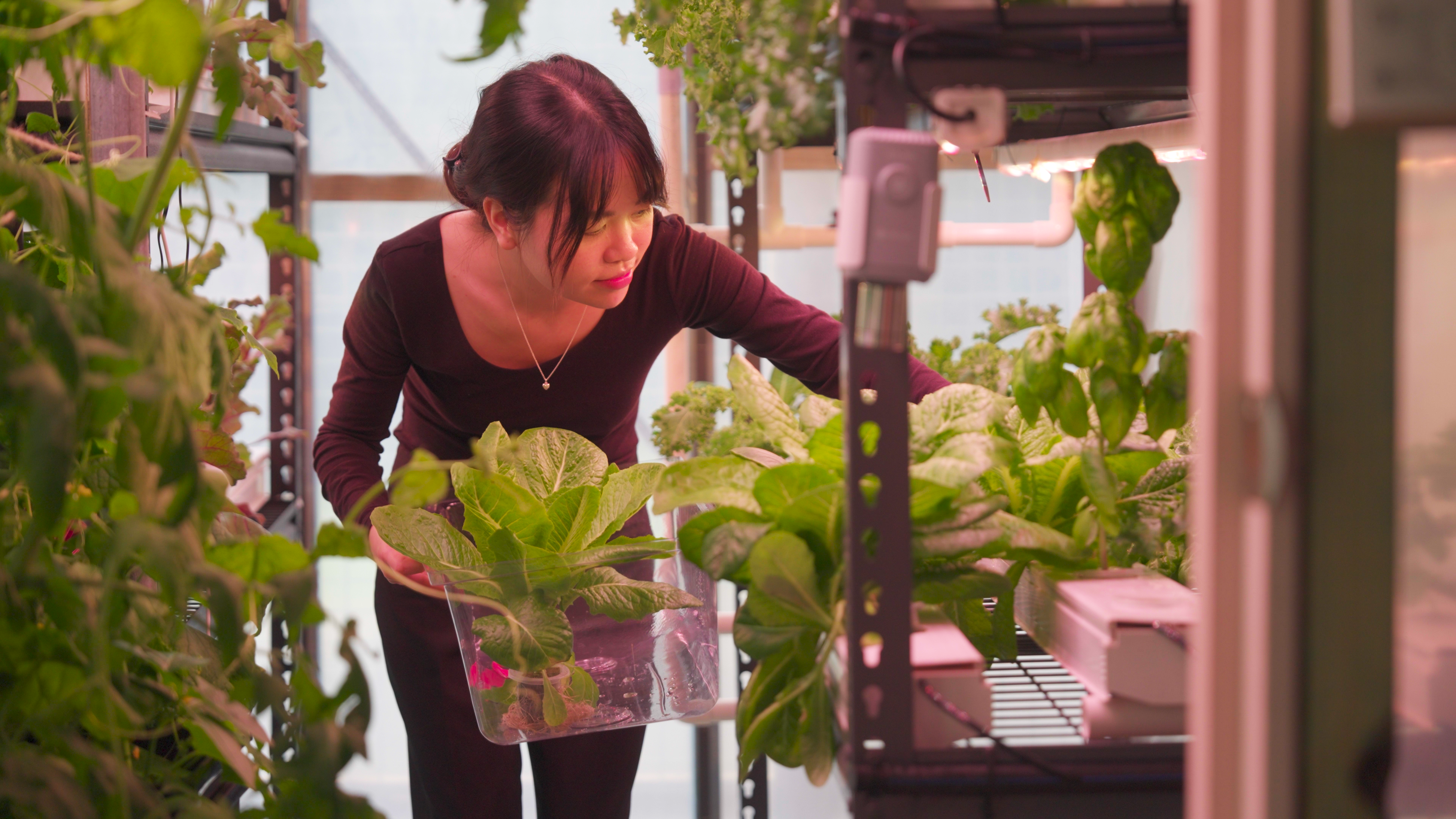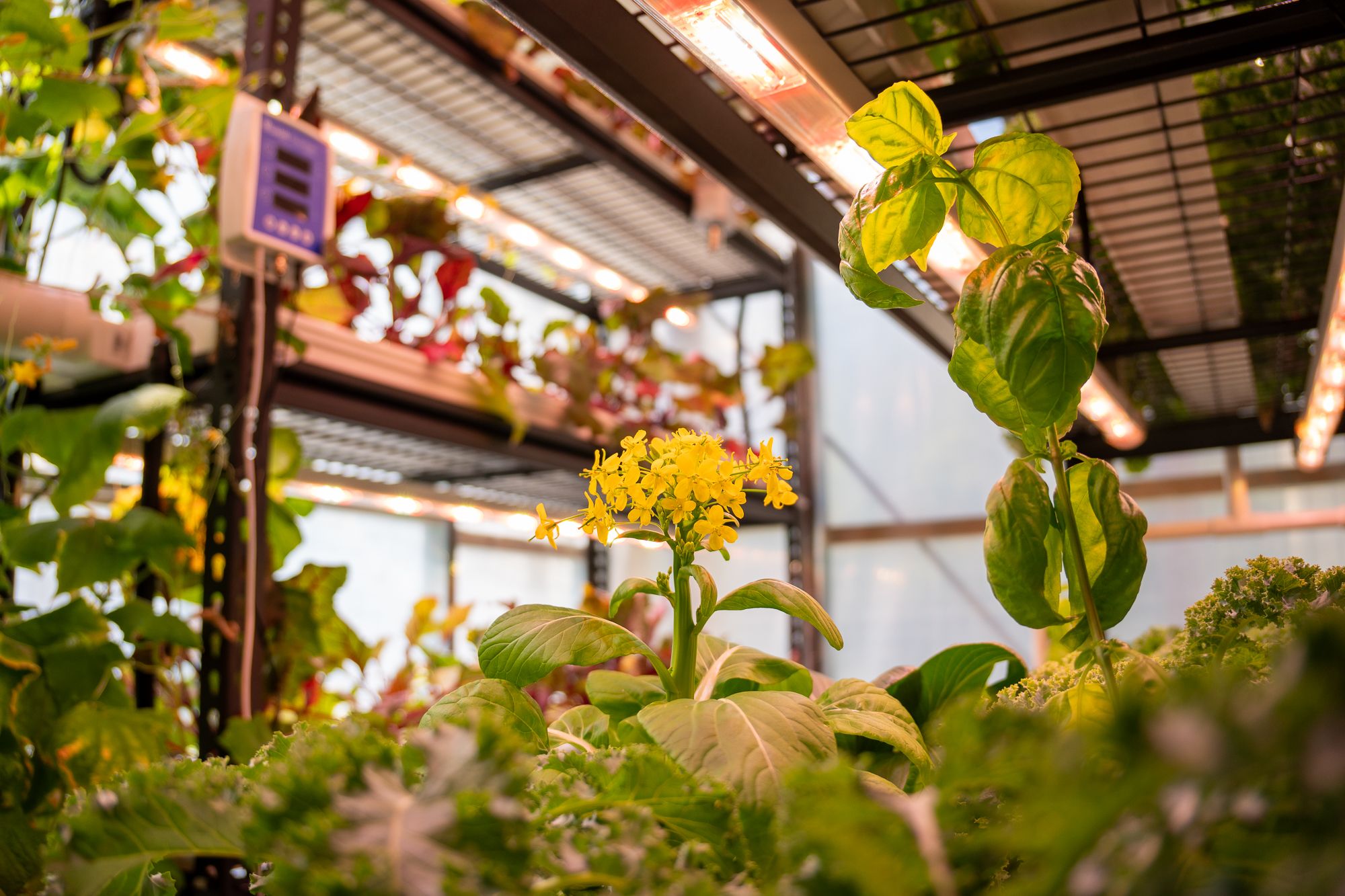In a Brisbane warehouse tucked behind high-rise apartments and traffic jams, the unmistakable scent of basil and a splash of purple radish mark a quiet agricultural revolution — not in the bush, but in a balcony.
University of Queensland PhD student Thi Thanh Nhan An is redefining what it means to “live green” in the city, with prototype garden systems designed to transform high-rise apartments into self-sufficient food hubs. Her urban farming research could one day put a backyard garden — and a full harvest — inside every Australian apartment.
“I cannot forget the moment when I opened the door and smelt the basil and saw the colour of the purple radish or the green lettuce under the light,” said An, reflecting on an early test of her prototype greenhouse.
“Hopefully everyone in the city can have their own farming space in their living space in the future.”

An’s suite of designs — a full greenhouse, a semi-greenhouse, and a vertically integrated indoor farm — are not just experiments. They’re functional, thriving, and already growing more than a dozen fruit and vegetable varieties, including kale, tomatoes, cucumbers and lettuce.
The breakthrough is timely. In cities like Brisbane, where apartments and townhouses are rapidly replacing the classic Aussie backyard, urbanites are losing more than just space — they’re losing their connection to fresh food and self-sufficiency.
Backed by UQ’s School of Architecture, Design and Planning, and built in partnership with engineering firm Fusion Modulair, the prototypes offer a glimpse into a greener, more productive future for urban living. The research team is now entering a data collection phase, analysing everything from temperature and humidity to yield and energy use.
An’s project is being hailed as a game-changer by experts across disciplines. Her supervisor, Dr Silvia Micheli, an award-winning architect and senior lecturer at UQ, says it has the potential to revolutionise apartment living.

“With this research, the ambition is to reimagine the way we live in the city and therefore we are rethinking how apartments can be designed to become more sustainable by including productive activities,” Dr Micheli said.
From a food security and sustainability standpoint, the benefits are clear: fewer food miles, fresher produce, and greater dietary autonomy.
“It’s more about putting the family in charge of the diet,” said Professor Paul Gauthier, a world-leading expert in vertical farming and one of An’s supervisors at UQ’s Queensland Alliance for Agriculture and Food Innovation.
Gauthier said the prototypes are already proving that small-scale indoor farming can rival — and in some cases outperform — traditional outdoor gardens, especially with the right climate control. Key to this is the support from Fusion Modulair, which has helped optimise air flow and energy efficiency inside the greenhouse units.
“It’s been fantastic, the collaboration has been very exciting for both sides,” said Fusion Modulair CEO Kevin Harris. “Our staff have developed innovative designs to improve air distribution inside the prototype semi-greenhouse to enhance plant growth while maintaining high yields with minimal energy use.”
Other industry partners including Philips, Viridis Lab and Farming Architects are also contributing to the project’s success, combining lighting innovation, building design and agriculture expertise.
As cities continue to grow upward, not outward, An’s vision of balconies buzzing with tomatoes and living rooms brimming with leafy greens might not be a utopian dream — it could be the future of food.
And it’s already growing.

